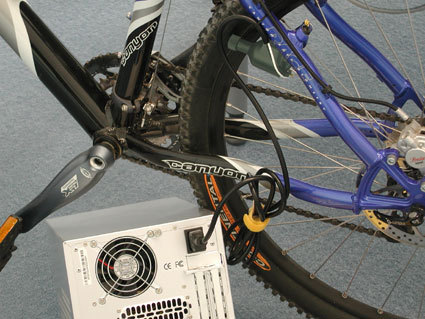The Next Generation of Cool: AOpen's 37 Watt Pentium M Desktop PC
You've Got To Want It
Intel has a problem. At high clock speeds, its Pentium 4 Prescott is power hungry beyond belief, while AMD, thanks to its Athlon64 processor, stands by laughing. Who cares about power? You should. The P4's high power consumption leads to a high electricity bill, and the chip puts out enormous amounts of heat, which in turn necessitates large and noisy fans to cool it.
Intel has a secret, though. Did you know that the chipmaker produces a processor that only draws one fifth of the power of a desktop chip? Yes, this is a notebook processor we're talking about. So can this miracle chip be used in a desktop system? Does it pack enough punch for a gaming setup? Indeed, it does! Step back and enjoy as the team here at THG demonstrates.
In this article we to present the ingredients required for such a low-power system, namely the appropriate motherboard and the Pentium M processor. We also offer some advice on the correct graphics configuration. Of course, we'll show you the results of our power-consumption measurements, both for the CPU and the entire system, and demonstrate how remarkably fast the system is by providing some benchmarks.
Depending on the feature set, current PCs draw between 120 and 180 watts - even more in the case of dual-core Pentium D systems. The kicker is that these numbers represent the systems' minimum power consumption when idling! Yes, even when they are doing nothing, modern computers are adding extra digits to the bottom line of your power bill. And once you fire up a game, 300 watts or even more aren't outside the realm of possibility! And even though AMD has slightly less power-hungry processors with its Athlon 64 line, even they are only slightly better, drawing between 120 and 160 watts.
Now, if we compare the performance-to-energy requirements of the previous generation platform to that of today's offerings, it becomes painfully obvious that power hunger has grown much faster than the performance. And this is a trend that has not been seen in other components. Consider that the energy efficiency of power supplies has constantly improved over the past years, and devices such as hard disks, optical drives and RAM require relatively little power compared to core system components.
Get Tom's Hardware's best news and in-depth reviews, straight to your inbox.
Current page: You've Got To Want It
Next Page More Performance, Little Added Value
Patrick Schmid was the editor-in-chief for Tom's Hardware from 2005 to 2006. He wrote numerous articles on a wide range of hardware topics, including storage, CPUs, and system builds.
